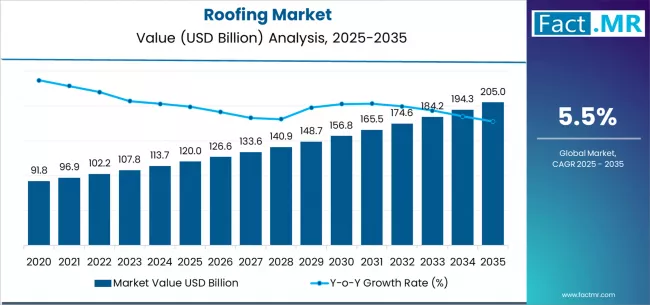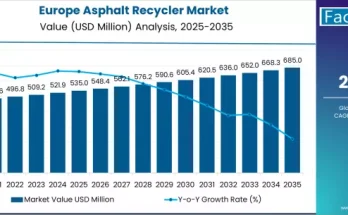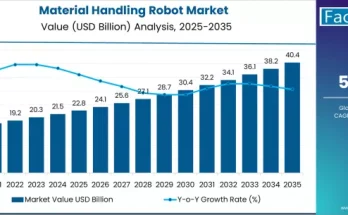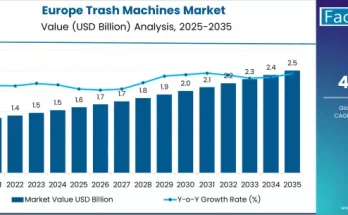The global roofing market is poised for significant expansion over the next decade, supported by accelerating infrastructure development, urban housing demand, and the rising focus on energy-efficient construction systems. According to a recent report by Fact.MR, the market is valued at USD 120.0 billion in 2025 and is projected to reach USD 205.0 billion by 2035, recording an absolute increase of USD 85.0 billion. This reflects a total growth of 70.8%, translating into a CAGR of 5.5% during the forecast period.
As cities evolve and sustainability becomes a global priority, roofing materials are undergoing a technological transformation—merging performance, design versatility, and environmental responsibility to meet modern construction needs.
Strategic Market Drivers
- Expanding Urbanization and Infrastructure Development
The rapid pace of urbanization and industrialization is fueling the demand for advanced roofing systems across residential, commercial, and industrial sectors. Governments worldwide are investing heavily in infrastructure projects, particularly in Asia-Pacific and the Middle East, where modern city expansions and smart building initiatives are gaining momentum.
Roofing solutions—ranging from asphalt shingles and tiles to metal and green roofing—are being adopted for their durability, insulation efficiency, and aesthetic appeal. Additionally, the push for energy-efficient and solar-integrated roofing systems is driving innovation in sustainable construction.
- Rising Adoption of Sustainable and Cool Roofing Technologies
As climate-conscious construction gains traction, cool roofs and green roofs are increasingly being integrated into urban design to reduce heat islands and enhance energy savings. Advanced materials with high solar reflectivity and thermal emittance are becoming standard in new building codes.
Manufacturers are also developing recyclable and bio-based roofing materials, aligning with net-zero goals and LEED-certified building standards.
- Industrial and Commercial Roofing Boom
The growth of logistics, warehousing, and data center infrastructure has bolstered demand for durable industrial roofing. Single-ply membranes, bituminous systems, and metal roofs are favored for their long lifespan, low maintenance, and superior waterproofing capabilities. In commercial projects, roofing materials with integrated photovoltaic (PV) systems are reshaping how buildings generate and conserve energy.
Browse Full Report: https://www.factmr.com/report/roofing-market
Regional Growth Highlights
East Asia: A Construction Powerhouse
East Asia remains the largest market for roofing materials, led by China, Japan, and South Korea. High-rise construction, manufacturing growth, and smart city developments continue to drive demand. Governments in the region are implementing energy conservation regulations, spurring adoption of reflective and sustainable roofing systems.
North America: Innovation Meets Sustainability
The U.S. and Canada are at the forefront of adopting eco-friendly roofing technologies, including reflective coatings, energy-saving membranes, and integrated solar panels. The region’s emphasis on building modernization and climate resilience supports consistent market growth. Additionally, the residential re-roofing segment is expanding, driven by renovation cycles and extreme weather adaptations.
Europe: Regulation-Driven Market Evolution
Europe’s roofing industry is influenced by stringent environmental standards and carbon reduction policies. Countries such as Germany, France, and the U.K. are promoting green building codes and material recycling initiatives. Manufacturers are investing in lightweight roofing composites and smart roofing materials that enhance energy management and sustainability.
Emerging Markets: Infrastructure-Led Growth
Regions such as Latin America, South Asia, and the Middle East & Africa are witnessing robust infrastructure investments and urban housing programs. Increasing industrialization and tourism-led construction are propelling demand for durable roofing solutions capable of withstanding diverse climatic conditions.
Market Segmentation Insights
By Material Type:
• Asphalt Shingles – Dominating due to cost-effectiveness and versatility.
• Metal Roofing – Preferred for durability and recyclability.
• Clay & Concrete Tiles – Gaining traction in aesthetic and traditional architecture.
• Bituminous Membranes – Used extensively in commercial and industrial buildings.
• Others (Green Roofs, Solar Roofing) – Rising adoption in sustainable projects.
By End Use:
• Residential
• Commercial
• Industrial
Challenges and Market Considerations
- Raw Material Price Volatility: Fluctuating asphalt, metal, and polymer prices impact manufacturing costs.
• Environmental Regulations: Strict emission and recycling mandates push innovation in low-VOC and circular materials.
• Weather-Related Damage: Increasing extreme weather events highlight the need for resilient and storm-resistant roofing.
• Installation Complexity: Skilled labor shortages and installation standards vary by region, affecting project timelines.
Competitive Landscape
The roofing market is highly competitive and innovation-driven, with leading players focusing on product efficiency, sustainability, and design integration. Companies are investing in recyclable materials, reflective coatings, and smart roofing systems to enhance energy efficiency and longevity.
Key Players in the Roofing Market:
• GAF Materials LLC
• CertainTeed LLC
• Owens Corning
• BMI Group
• IKO Industries Ltd.
• TAMKO Building Products LLC
• Sika AG
• Boral Limited
• Siplast, Inc.
• Atlas Roofing Corporation
• Braas Monier Building Group S.A.
Future Outlook: Smart, Sustainable, and Resilient Roofing Systems
The coming decade will redefine the global roofing industry through smart materials, digital construction tools, and circular economy principles. Integration of AI-enabled design systems, self-healing coatings, and solar-integrated roofing will become mainstream as builders prioritize energy conservation and lifecycle performance.
With consistent growth projected across both developed and emerging markets, the roofing industry stands at the forefront of sustainable construction innovation—building safer, greener, and more resilient cities for the future.



